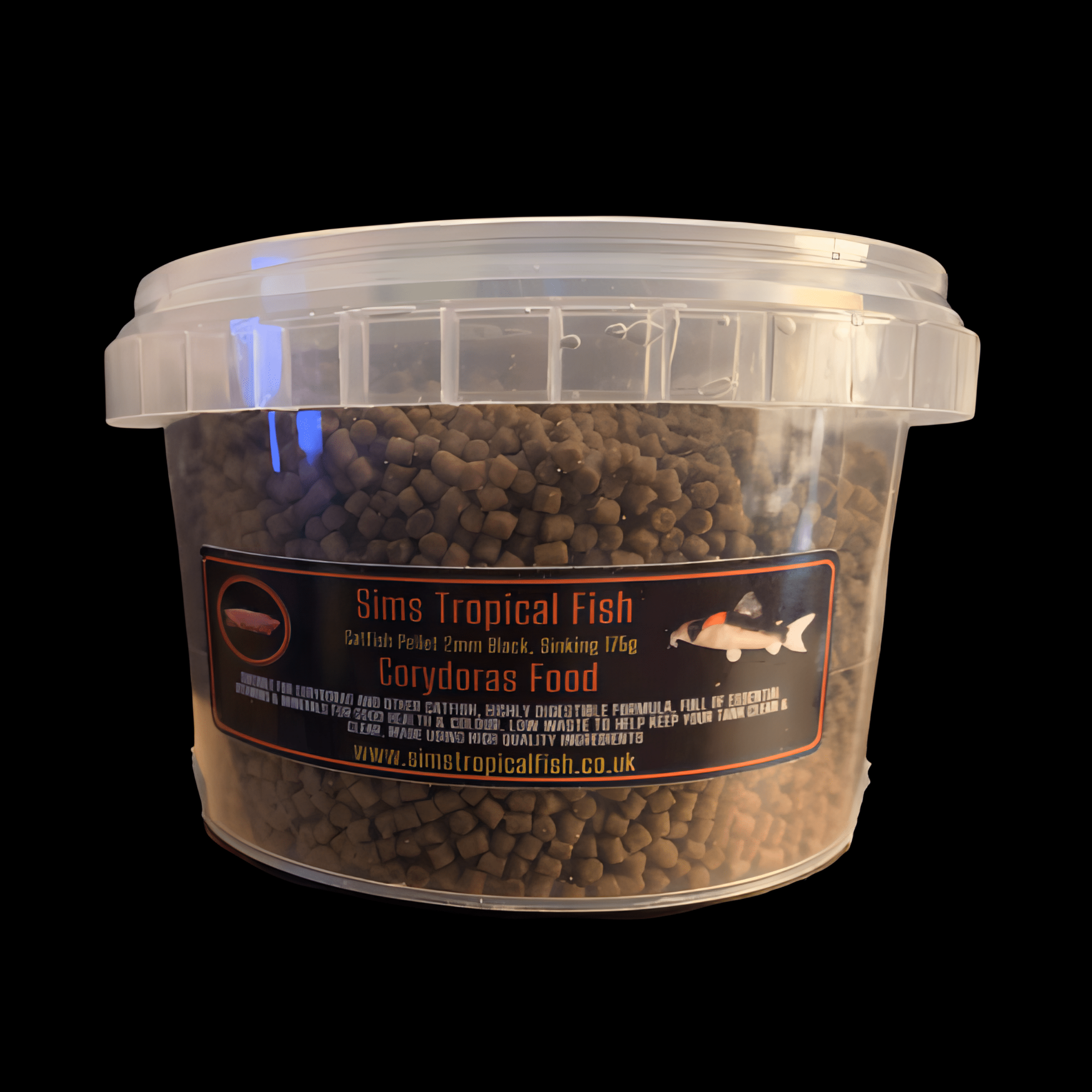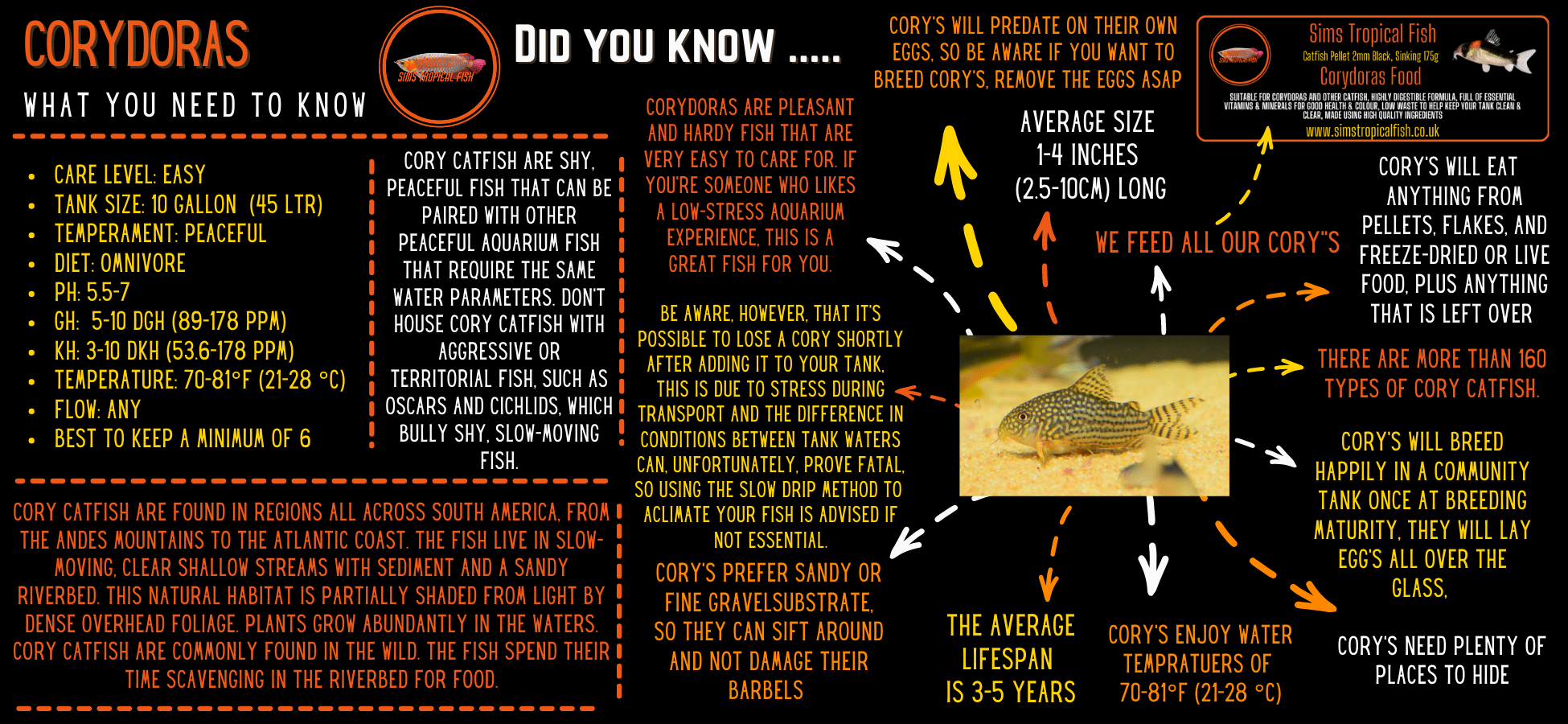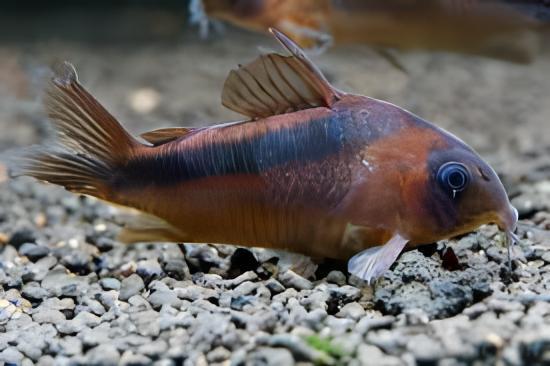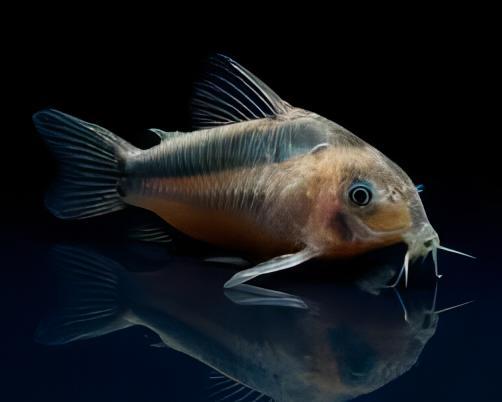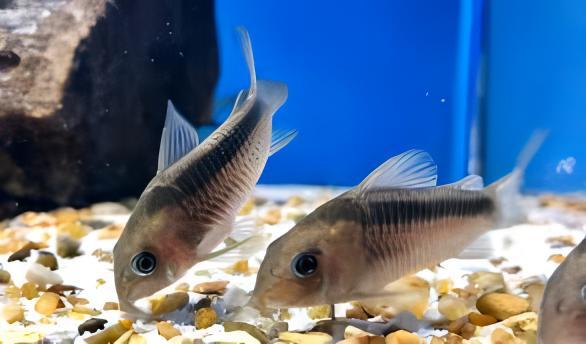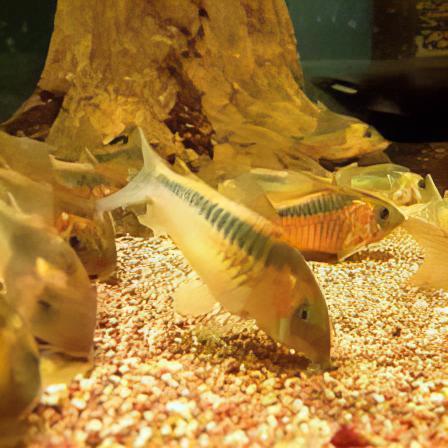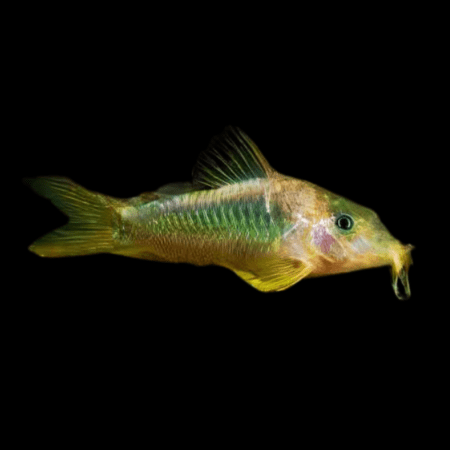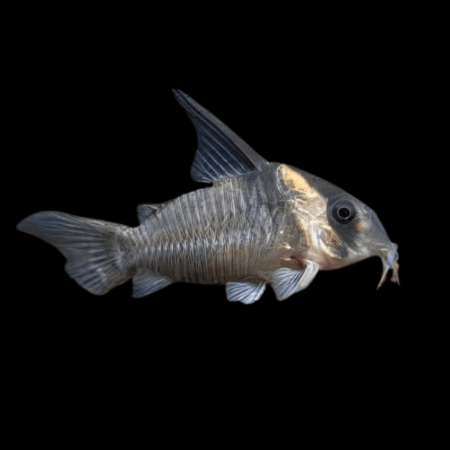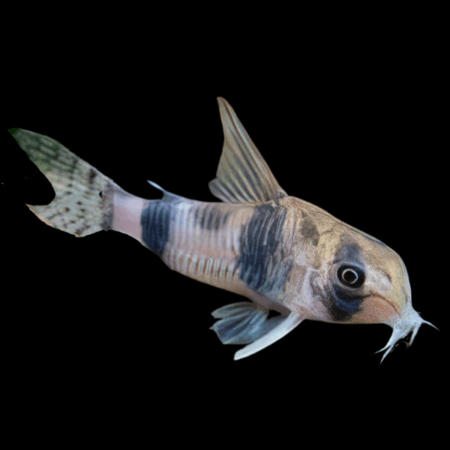Description
Rusty Corydoras Rabauti
Overview
| Synonyms | Corydoras Myersi |
| Distribution | Lower Parana River basin and coastal rivers in Uruguay and Brazil. Most specimens offered for sale in the trade are captive-bred. |
| Maximum Size | 6cm (2.36″) |
| Temperature | 15-25°C |
| Water Parameters | Captive-raised specimens will adapt to a wide range of water conditions, providing that good water quality is maintained. |
| Compatibility | Community |
| Lighting | No special requirements |
| Sexual Dimorphism | Females are significantly larger and appear wider when viewed from above. Males are slimmer and often have an extended dorsal fin. |
| Feeding | Catfish pellets, granules, flake and frozen foods |
Description
Care
The Rusty Cory is known from the Solimões (upper Amazon) and Negro River basins. This peaceful species is ideal for the mature softwater aquarium, and should be maintained in groups of 5 or more due to shoaling nature. Unfortunately, it can be a little prone to barbel infections/erosion, so it is of paramount importance that the fish are kept on a soft sand substrate (rather than gravel where waste can build up unseen) in order to protect these delicate sensory organs. Regular maintenance, including frequent partial water changes, should be carried out in order to keep these fish in good condition. Provide plenty of shady areas amongst driftwood, rocks, and areas of dense planting. Other peaceful species such as some of the smaller pencilfish, tetra, and rasboras make ideal tankmates, and their presence as “dither fish” in midwater will encourage the Corydoras out into view more often. Corydoras have the ability to breathe air intestinally, so a small gap should be left between the surface of the water and the cover slides in order for the fish to come up to the surface and take air in. It may do this numerous times per day. An albino variant is sometimes available. May also be seen on sale as Rabaut’s Cory. Similar in appearance to C. zygatus, but the fry of these species look very different to one another.
Taxonomic revision in the future will see this species moved out of the genus Corydoras, although it may be a further 190 years before any new name is embraced by a trade that has seen no previous change to this long-established binomial! For now, C. paleatus resides in Lineage 6 with a few close kin.
Feeding
Catfish pellets and other sinking foods are a good staple, with frozen foods such as Cyclops, mosquito larvae and Daphnia a welcome treat.
Breeding
Mature pairs can be triggered into spawning by performing a large, slightly cooler water change. The pair will adopt the classic “T position” where the male fertilises the eggs that are held between the females pelvic fins. The adhesive eggs will then be deposited onto plants, decor, or the sides of the aquarium etc and the process repeated. The eggs generally take 3-4 days to hatch after which time the tiny fry should be offered finely powdered first foods. A few days later they will be able to take newly hatched brineshrimp. To avoid predation and ensure a higher success rate, many fishkeepers move the parents to another aquarium after the eggs have all been deposited.

